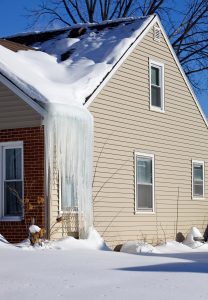Why (and How) We Should Incorporate Climate Change Resiliency in Affordable Multifamily Building Assessments
 An unfortunate truth about climate change is that it will disproportionately affect the most vulnerable populations, such as families living in affordable multifamily buildings.
An unfortunate truth about climate change is that it will disproportionately affect the most vulnerable populations, such as families living in affordable multifamily buildings.
However, if we can make these buildings more resilient to the effects of climate change, like blizzards, floods, heatwaves, and power outages, these vulnerable populations also stand to gain the most. Improving the resiliency and preparedness of affordable housing stock will bring benefits to communities, such as increased safety and health outcomes and faster re-occupancy following a disaster.
The time to invest in resilient affordable housing has never been more urgent. Almost 19 million families across the U.S. are “housing insecure,” meaning that they are homeless or that they pay more than half of monthly income on housing. Further, the effects of climate change will continue to reduce the already-short supply of affordable housing.
“Resiliency in our buildings is becoming a larger and greater need as we experience the effects of climate change,” said Maria Quiñones, Consulting Services Manager at Elevate Energy. “It’s valid and important to focus first on the affordable communities. One learning from recent hurricanes and fires that have damaged communities across the country is that low-income communities and affordable buildings are often the worst affected and the last to receive help.”
A Promising Pilot in Our Nation’s Capital
A first-of-its-kind “Resilience, Energy, and Water Opportunity & Solar + Storage Assessment Tool” is being developed as part of a pilot targeting affordable multifamily buildings in Washington, D.C. The goal is to increase the climate resiliency of affordable multifamily buildings by reducing energy and water use, increasing solar power, and addressing vulnerabilities within buildings to mitigate future damage from extreme weather.

The pilot assessed 20 affordable multifamily buildings, including the nation’s first passive house retrofit, to understand how prepared each property is in confronting disasters related to climate change. The pilot is part of Climate Ready DC, a plan to help the area prepare for impacts of climate change, including severe storms and heatwaves.
The pilot is led by Enterprise Community Partners with funding from the Washington, D.C. Department of Energy and Environment (DOEE) Renewable Energy Development Fund and the Solar for All program. Enterprise partnered with the National Housing Trust, Clean Energy Group, and New Ecology, Inc (NEI). NEI brought Elevate Energy in for on-the-ground support and expertise to help complete four of the 20 assessments and provide feedback on the tool.
Resiliency Opportunities
The resiliency assessments were much like typical energy and water efficiency assessments. Trained analysts inspected buildings, spoke with building owners and tenants, and analyzed historical utility consumption data. What’s new is that the tool includes a specific set of queries related to resiliency, such as the following:
- Questions about aging in place like, are exterior pathways slip-resistant?
- Questions about mitigation and adaptation like, is there a backup generator on site connected to critical systems such as elevators and community rooms?
- Questions about healthy housing like, is there evidence of mold?
During the assessment, analysts investigate and discuss these questions to create a full picture of a building’s resiliency alongside energy and water efficiency and solar feasibility.
In the pilot, building owners or managers receive a final report that includes a description of how the assessment was conducted, an overview of the building, identification of the primary hazards facing the building, and a menu of resiliency opportunities with details on estimated costs and potential funding sources.
Some resiliency strategies include typical energy and water efficiency recommendations, like replacing old light fixtures with LED lights and installing low-flow faucet aerators. But other resiliency strategies can also include emergency preparedness measures like having backup potable water supply or developing an emergency management plan. The tool also presents options for installing solar photovoltaic panels that are connected to battery storage systems.
The aim of the pilot is not to increase an owner’s liability but to help them improve existing capital planning work. In fact, one of the intended benefits of the pilot and the tool is that building owners can realize long-term operating and avoided impact cost savings, increased durability, and improved emergency operations through resiliency planning.
For now, the tool is specific to the D.C. housing market, but NEI and Elevate Energy are investigating how it could be leveraged in other markets, including Chicago. We see this promising tool as a new and welcome layer to a typical energy and water efficiency assessment and one that’s critical given the increasing frequency and severity of storms, droughts, and other disasters and the disproportionate effect these have on our most vulnerable populations. Please check back for updates!



